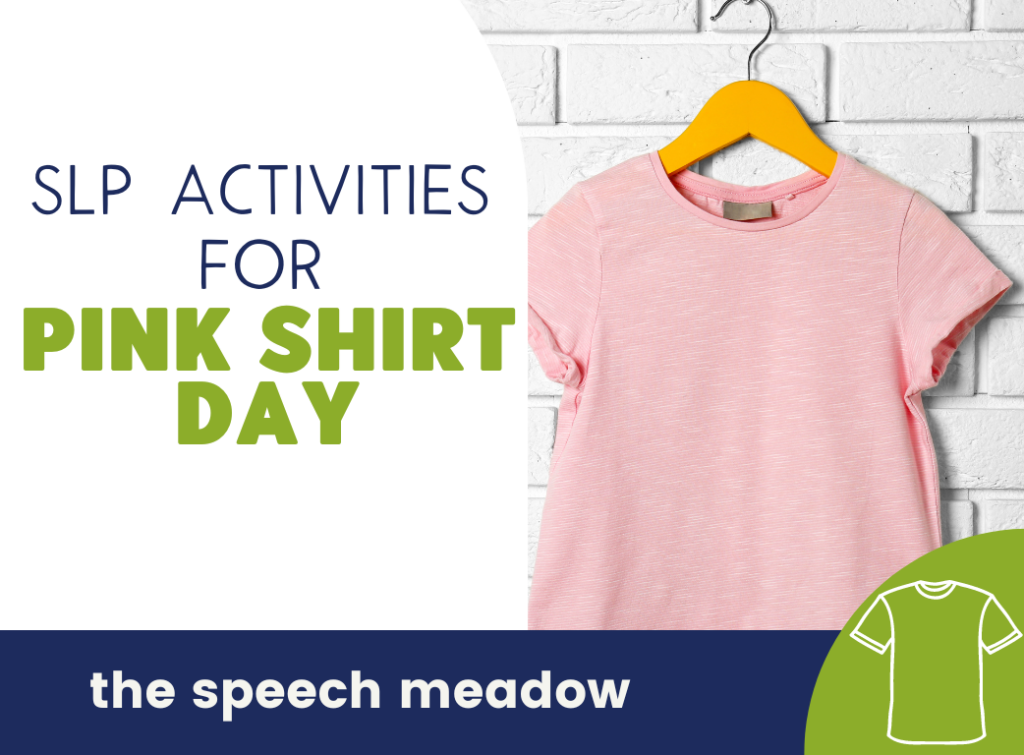With SLPs being involved in social communication, we should be involved in anti-bullying initiatives in schools. So I thought I would talk about activities SLPs can do for Pink Shirt Day. These are also excellent activities for Autism Acceptance Month. Really we should be addressing these needs throughout the year and not only at specific times.

What is Pink Shirt Day?
Pink Shirt Day occurs on February 22nd in Canada. It is a day to talk about bullying. Staff and students come to school wearing pink shirts in support of stopping bullying in school. For more information about Pink Shirt Day, click here.
Why Should We Be Involved?
Most SLPs work with students who are bullied and with students who are bullies. Neurodivergent students are frequently the victims of bullying. On the flip side, we also work with neurodivergent students who bully. As we have extensive training in social communication. We have a role in helping these students. We should also be active in greater school-wide anti-bullying initiatives.
Pink Shirt Activities
1. Teach neurotypical students about Autism. As you hear in the neurodiverse community, we SLPs and others spend so much time teaching neurodivergent students how to behave. The problem is we don’t teach neurotypical people how to interact with neurodivergent people. This will benefit both the neurodiverse and neurotypical communities.
These can be formal activities where we talk about how people’s brains are different and how some people need various tools or activities to help them learn at school. If you have Autistic or other neurodivergent students who feel comfortable talking about their experiences, that can be impactful. If not, talking about brain differences can still be powerful.
2. Teach about communication differences. Some neurotypical peers feel awkward and unsure of how to talk with some of their neurodivergent peers. Again, explain the different ways to communicate and providing tips to communicate. It can help neurotypical peers have more understanding. As well, it can make them more confident in talking with their peers. These talks can be as simple as teaching peers general language facilitation techniques. Click here for a student handout to help remind them language facilitation activities for peers. For more ideas and information on how to talk about AAC users in a mainstream classroom, click here.
3. Play cooperative games. Cooperative games are great because you have to work together to win. There is also no winner. There are great games for young and older students that will fit your needs. Here’s another post on how to use cooperative games in speech, click here.
4. Have students plan an activity together. These can be pretend activities, like planning a trip to another country or they can be real outings. For younger students it may be planning to watch some videos on YouTube. For older students, it might be an outing like to a fast food restaurant or to Timmy’s. These activities will require a lot of coaching on your part but they are worth it.
5. Bake or cook together. This can be very similar to having students plan an activity together but you pick what they are going to make. If the students are able, have them choose who does what. If that is not possible, you assign activities.
For ideas on addressing bullying and stuttering, check out this great post on Speech Sprouts’ blog (click here).
What are your favourite anti-bullying activities?
